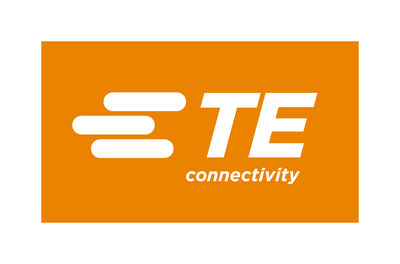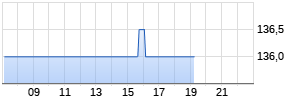
TE Connectivity Announces Financial Results for First Quarter 2017
PR Newswire
SCHAFFHAUSEN, Switzerland, Jan. 25, 2017
SCHAFFHAUSEN, Switzerland, Jan. 25, 2017 /PRNewswire/ -- TE Connectivity Ltd. (NYSE: TEL) today reported results for the fiscal first quarter that ended December 30, 2016.

First Quarter Highlights
- Net sales were $3.1 billion, up 8 percent and 7 percent organically, compared to the first quarter of 2016
- Orders, excluding SubCom, were $3.1 billion in the quarter, up 10 percent organically from the first quarter of 2016
- Diluted earnings per share from continuing operations were $1.13, a 36 percent improvement year over year
- Adjusted earnings per share were $1.15, up 37 percent over the same period in 2016
- Cash flow from continuing operating activities was $404 million, with free cash flow of $218 million, and $234 million returned to shareholders
- Announced CEO succession plan with Terrence Curtin to succeed Tom Lynch as CEO following the company's annual general meeting of shareholders; Lynch will continue as executive chairman of the board
First Quarter Results
For the first quarter, the company reported net sales of $3.1 billion, with organic sales growth of 7 percent year-over-year. Diluted earnings per share (EPS) from continuing operations (GAAP EPS) were $1.13 and adjusted EPS were $1.15, both record first quarter results for the company. Cash flow from continuing operating activities was $404 million, and free cash flow was $218 million. The company returned $234 million to shareholders in the quarter through dividends and share repurchases. Excluding the company's SubCom business, total orders were $3.1 billion, up 10 percent organically from the first quarter of 2016, and the book-to-bill ratio was 1.06.
"We had a great start to the fiscal year," said TE Connectivity Chairman and CEO Tom Lynch. "Organically, sales grew 7 percent over the prior year driven by double digit growth in our Automotive, Commercial Transportation and Appliances business units; improvement in our Data and Devices business and strength in Asia. Our profitability reached a record in the quarter due to higher sales volume particularly in our harsh environment businesses, continued execution of the TE Operating Advantage and the benefit of previously enacted cost reductions.
"We are raising our organic sales and EPS guidance for the full year, reflecting organic growth in all of our segments, continued benefits from our TE Operating Advantage program, and momentum in our acquired businesses. As I approach my upcoming transition from CEO to executive chairman in March, I'm proud of all we've accomplished and excited to have Terrence take the company forward to an even brighter future."
2017 Outlook
For the fiscal second quarter 2017, the company expects net sales of $3.025 billion to $3.125 billion, reflecting an increase of 4 percent year over year at the midpoint. GAAP EPS are expected to be $0.97 to $1.01, including net restructuring, acquisition-related and other charges of $0.08. TE expects adjusted EPS of $1.05 to $1.09 which represents a 19 percent improvement at the mid-point versus the second quarter of 2016.
For the full year, the company expects net sales of $12.2 to $12.6 billion, reflecting 3 percent actual and 4 percent organic growth at the mid-point versus the prior year, excluding the additional week in fiscal year 2016. GAAP EPS are expected to be $4.04 to $4.24 including restructuring, acquisition-related and other charges of $0.34 and a tax-related benefit of $0.08. TE expects adjusted EPS of $4.30 to $4.50, reflecting 11 percent growth at the mid-point compared to 2016, when excluding the additional week.
Information about TE Connectivity's use of non-GAAP financial measures is provided below. For reconciliations of these non-GAAP financial measures, see the attached tables.
Chief Executive Officer Transition
On October 3, 2016, the company announced that its board of directors appointed Terrence Curtin to succeed Tom Lynch as the company's chief executive officer, following the company's annual general meeting of shareholders. Upon completion of the transition, Lynch will continue as executive chairman of the board.
Conference Call and Webcast
The company will hold a conference call today beginning at 8:30 a.m. ET. The dial-in information is provided here:
- At TE Connectivity's website: http://investors.te.com.
- By telephone: For both "listen-only" participants and those participants who wish to take part in the question-and-answer portion of the call, the dial-in number in the United States is (800) 230-1059, and for international callers, the dial-in number is (612) 234-9959.
- An audio replay of the conference call will be available beginning at 10:30 a.m. ET on January 25, 2017, and ending at 11:59 p.m. ET on February 1, 2017. The dial-in number for participants in the United States is (800) 475-6701. For participants outside the United States, the dial-in number is (320) 365-3844. The replay access code for all callers is 414794.
About TE Connectivity
TE Connectivity (NYSE: TEL) is a $12 billion global technology leader. Our commitment to innovation enables advancements in transportation, industrial applications, medical technology, energy, data communications, and the home. TE's unmatched breadth of connectivity and sensor solutions, proven in the harshest of environments, helps build a safer, greener, smarter and more connected world. With 75,000 people – including more than 7,000 engineers – working alongside customers in nearly 150 countries, we help ensure that EVERY CONNECTION COUNTS – www.TE.com
Non-GAAP Measures
"Organic Net Sales Growth," "Organic Net Sales Growth Excluding the Impact of the Additional Week," "Net Sales Excluding the Impact of the Additional Week," "Net Sales Growth Excluding the Impact of the Additional Week," "Adjusted Operating Income," "Adjusted Operating Income Excluding the Impact of the Additional Week," "Adjusted Operating Margin Excluding the Impact of the Additional Week," "Adjusted Operating Margin," "Adjusted Other Income, Net," "Adjusted Income Tax Expense," "Adjusted Income from Continuing Operations," "Adjusted Earnings Per Share," "Adjusted Earnings Per Share Excluding the Impact of the Additional Week," and "Free Cash Flow" are non-GAAP measures and should not be considered replacements for results in accordance with accounting principles generally accepted in the U.S. ("GAAP"). These non-GAAP measures may not be comparable to similarly-titled measures reported by other companies. The primary limitation of these measures is that they exclude the financial impact of items that would otherwise either increase or decrease our reported results. This limitation is best addressed by using these non-GAAP measures in combination with the most directly comparable GAAP measures in order to better understand the amounts, character and impact of any increase or decrease in reported amounts. The following provides additional information regarding these non-GAAP measures:
- Organic Net Sales Growth – is a useful measure of our underlying results and trends in the business. It is also a significant component in our incentive compensation plans. The difference between reported net sales growth (the most comparable GAAP measure) and Organic Net Sales Growth consists of the impact from foreign currency exchange rates and acquisitions and divestitures, if any. Organic Net Sales Growth is a useful measure of our performance because it excludes items that: i) are not completely under management's control, such as the impact of changes in foreign currency exchange rates; or ii) do not reflect the underlying growth of the company, such as acquisition and divestiture activity.
- Organic Net Sales Growth Excluding the Impact of the Additional Week, Net Sales Excluding the Impact of the Additional Week, and Net Sales Growth Excluding the Impact of the Additional Week – represent Organic Net Sales Growth, net sales (the most comparable GAAP measure), and net sales growth (the most comparable GAAP measure), respectively, excluding the impact of the additional week in the fourth quarter of the fiscal year for fiscal years which are 53 weeks in length. The impact of the additional week was estimated using an average weekly sales figure for the last month of the fiscal year. We believe these measures are useful to investors because they provide insight into our underlying operating results, trends, and the comparability of these results between periods.
- Adjusted Operating Income – represents operating income (the most comparable GAAP measure) before special items including charges or income related to restructuring and other charges, acquisition related charges, impairment charges, and other income or charges, if any. We utilize Adjusted Operating Income to assess segment level core operating performance and to provide insight to management in evaluating segment operating plan execution and underlying market conditions. It also is a significant component in our incentive compensation plans. Adjusted Operating Income is useful to investors because it provides insight into our underlying operating results, trends, and the comparability of these results between periods.
- Adjusted Operating Income Excluding the Impact of the Additional Week and Adjusted Operating Margin Excluding the Impact of the Additional Week – represents Adjusted Operating Income and Adjusted Operating Margin, respectively, excluding the impact of the additional week in the fourth quarter of the fiscal year for fiscal years which are 53 weeks in length. We believe these measures are useful to investors because they provide insight into our underlying operating results, trends, and the comparability of these results between periods.
- Adjusted Operating Margin – represents operating margin (the most comparable GAAP measure) before special items including charges or income related to restructuring and other charges, acquisition related charges, impairment charges, and other income or charges, if any. We present Adjusted Operating Margin before special items to give investors a perspective on the underlying business results. This measure should be considered in conjunction with operating margin calculated using our GAAP results in order to understand the amounts, character and impact of adjustments to operating margin.
- Adjusted Other Income, Net – represents other income, net (the most comparable GAAP measure) before special items including tax sharing income related to certain proposed adjustments to prior period tax returns and other tax items, if any. We present Adjusted Other Income, Net as we believe that it is appropriate for investors to consider results excluding these items in addition to results in accordance with GAAP.
- Adjusted Income Tax Expense – represents income tax expense (the most comparable GAAP measure) after adjusting for the tax effect of special items including charges related to restructuring and other charges, acquisition related charges, impairment charges, other income or charges, and certain significant special tax items, if any. We present Adjusted Income Tax Expense to provide investors further information regarding the tax effects of adjustments used in determining the non-GAAP financial measure Adjusted Income from Continuing Operations (as defined below).
- Adjusted Income from Continuing Operations – represents income from continuing operations (the most comparable GAAP measure) before special items including charges or income related to restructuring and other charges, acquisition related charges, impairment charges, tax sharing income related to certain proposed adjustments to prior period tax returns and other tax items, certain significant special tax items, other income or charges, if any, and, if applicable, the related tax effects. We present Adjusted Income from Continuing Operations as we believe that it is appropriate for investors to consider results excluding these items in addition to results in accordance with GAAP. Adjusted Income from Continuing Operations provides additional information regarding our underlying operating results, trends and the comparability of these results between periods.
- Adjusted Earnings Per Share – represents diluted earnings per share from continuing operations (the most comparable GAAP measure) before special items, including charges or income related to restructuring and other charges, acquisition related charges, impairment charges, tax sharing income related to certain proposed adjustments to prior period tax returns and other tax items, certain significant special tax items, other income or charges, if any, and, if applicable, the related tax effects. We present Adjusted Earnings Per Share because we believe that it is appropriate for investors to consider results excluding these items in addition to results in accordance with GAAP. We believe such a measure provides insight into our underlying operating results, trends, and the comparability of these results between periods, since it excludes the impact of special items, which may recur, but tend to be irregular as to timing. It also is a significant component in our incentive compensation plans.
- Adjusted Earnings Per Share Excluding the Impact of the Additional Week – represents Adjusted Earnings Per Share excluding the impact of the additional week in the fourth quarter of the fiscal year for fiscal years which are 53 weeks in length. We believe Adjusted Earnings Per Share Excluding the Impact of the Additional Week is useful to investors because it provides insight into our underlying operating results, trends, and the comparability of these results between periods.
- Free Cash Flow (FCF) – is a useful measure of our ability to generate cash. The difference between net cash provided by continuing operating activities (the most comparable GAAP measure) and Free Cash Flow consists mainly of significant cash outflows and inflows that we believe are useful to identify. We believe Free Cash Flow provides useful information to investors as it provides insight into the primary cash flow metric used by management to monitor and evaluate cash flows generated from our operations.
Free Cash Flow is defined as net cash provided by continuing operating activities excluding voluntary pension contributions and the cash impact of special items, if any, minus net capital expenditures. Voluntary pension contributions are excluded from the GAAP measure because this activity is driven by economic financing decisions rather than operating activity. Certain special items, including net payments related to pre-separation tax matters, and cash (collected) paid pursuant to collateral requirements related to cross currency swaps, are also excluded by management in evaluating Free Cash Flow. Net capital expenditures consist of capital expenditures less proceeds from the sale of property, plant, and equipment. These items are subtracted because they represent long-term commitments.
In the calculation of Free Cash Flow, we subtract certain cash items that are ultimately within management's and the Board of Directors' discretion to direct and may imply that there is less or more cash available for our programs than the most comparable GAAP measure indicates. It should not be inferred that the entire Free Cash Flow amount is available for future discretionary expenditures, as our definition of Free Cash Flow does not consider certain non-discretionary expenditures, such as debt payments. In addition, we may have other discretionary expenditures, such as discretionary dividends, share repurchases, and business acquisitions that are not considered in the calculation of Free Cash Flow.
Forward-Looking Statements
This release contains certain "forward-looking statements" within the meaning of the U.S. Private Securities Litigation Reform Act of 1995. These statements are based on management's current expectations and are subject to risks, uncertainty and changes in circumstances, which may cause actual results, performance, financial condition or achievements to differ materially from anticipated results, performance, financial condition or achievements. All statements contained herein that are not clearly historical in nature are forward-looking and the words "anticipate," "believe," "expect," "estimate," "plan," and similar expressions are generally intended to identify forward-looking statements. We have no intention and are under no obligation to update or alter (and expressly disclaim any such intention or obligation to do so) our forward-looking statements whether as a result of new information, future events or otherwise, except to the extent required by law. The forward-looking statements in this presentation include statements addressing our future financial condition and operating results. Examples of factors that could cause actual results to differ materially from those described in the forward-looking statements include, among others, business, economic, competitive and regulatory risks, such as conditions affecting demand for products, particularly in the automotive and data and devices industries; competition and pricing pressure; fluctuations in foreign currency exchange rates and commodity prices; natural disasters and political, economic and military instability in countries in which we operate; developments in the credit markets; future goodwill impairment; compliance with current and future environmental and other laws and regulations; and the possible effects on us of changes in tax laws, tax treaties and other legislation. More detailed information about these and other factors is set forth in TE Connectivity Ltd.'s Annual Report on Form 10-K for the fiscal year ended Sept. 30, 2016 as well as in our Quarterly Reports on Form 10-Q, Current Reports on Form 8-K and other reports filed by us with the U.S. Securities and Exchange Commission.
| TE CONNECTIVITY LTD. | |||
| CONSOLIDATED STATEMENTS OF OPERATIONS (UNAUDITED) | |||
| | | | |
| | | | |
| | For the Quarters Ended | ||
| | December 30, | | December 25, |
| | 2016 | | 2015 |
| | (in millions, except per share data) | ||
| Net sales | $ 3,063 | | $ 2,833 |
| Cost of sales | 1,998 | | 1,888 |
| Gross margin | 1,065 | | 945 |
| Selling, general, and administrative expenses | 372 | | 340 |
| Research, development, and engineering expenses | 158 | | 162 |
| Acquisition and integration costs | 2 | | 5 |
| Restructuring and other charges, net | 47 | | 40 |
| Operating income | 486 | | 398 |
| Interest income | 5 | | 6 |
| Interest expense | (31) | | (30) |
| Other income, net | - | | 8 |
| Income from continuing operations before income taxes | 460 | | 382 |
| Income tax expense | (54) | | (58) |
| Income from continuing operations | 406 | | 324 |
| Income from discontinued operations, net of income taxes | 3 | | 29 |
| Net income | $ 409 | | $ 353 |
| | | | |
| Basic earnings per share: | | | |
| Income from continuing operations | $ 1.14 | | $ 0.84 |
| Income from discontinued operations | 0.01 | | 0.08 |
| Net income | 1.15 | | 0.92 |
| | | | |
| Diluted earnings per share: | | | |
| Income from continuing operations | $ 1.13 | | $ 0.83 |
| Income from discontinued operations | 0.01 | | 0.07 |
| Net income | 1.14 | | 0.91 |
| | | | |
| Dividends paid per common share | $ 0.37 | | $ 0.33 |
| | | | |
| Weighted-average number of shares outstanding: Werbung Mehr Nachrichten zur TE Connectivity Aktie kostenlos abonnieren
E-Mail-Adresse
Bitte überprüfe deine die E-Mail-Adresse.
Benachrichtigungen von ARIVA.DE (Mit der Bestellung akzeptierst du die Datenschutzhinweise) -1  Vielen Dank, dass du dich für unseren Newsletter angemeldet hast. Du erhältst in Kürze eine E-Mail mit einem Aktivierungslink. Hinweis: ARIVA.DE veröffentlicht in dieser Rubrik Analysen, Kolumnen und Nachrichten aus verschiedenen Quellen. Die ARIVA.DE AG ist nicht verantwortlich für Inhalte, die erkennbar von Dritten in den „News“-Bereich dieser Webseite eingestellt worden sind, und macht sich diese nicht zu Eigen. Diese Inhalte sind insbesondere durch eine entsprechende „von“-Kennzeichnung unterhalb der Artikelüberschrift und/oder durch den Link „Um den vollständigen Artikel zu lesen, klicken Sie bitte hier.“ erkennbar; verantwortlich für diese Inhalte ist allein der genannte Dritte. Andere Nutzer interessierten sich auch für folgende News | |||




